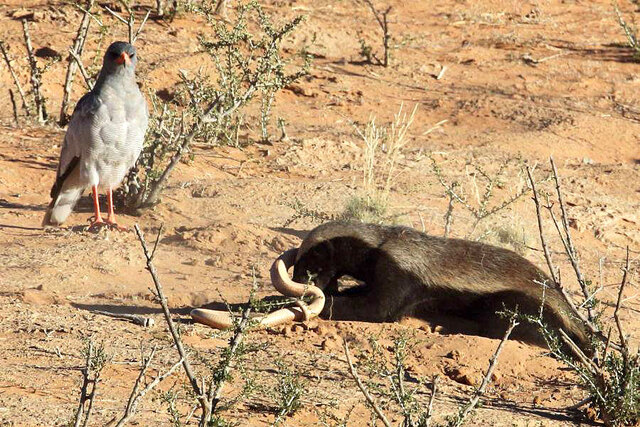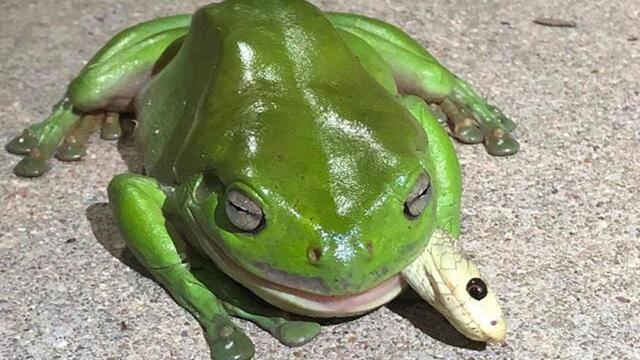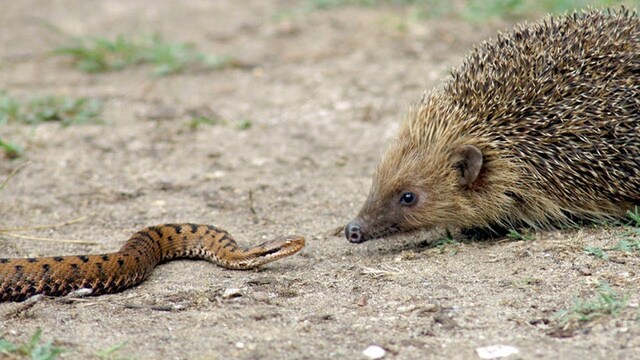What animal are snakes most afraid of? What animals feed on snakes? What are the natural enemies of snakes? Snake is the general name for reptiles with degenerated limbs. There are currently more than 3,000 known species of snakes in the world. Since many snakes are venomous, many people become frightened by the sight of a snake and choose to stay away. However, every creature in nature has its own natural enemies, and snakes are no exception.

In this article, we will take stock of the top ten natural enemies of snakes, reveal the animals that feed on snakes, and how they become the "nemesis" of snakes. Let’s take a look at which species in nature prey on snakes!
Snake natural enemy one: meerkats

If there is anyone in the animal kingdom who can beat the "honey badger" in hunting snakes, it is the meerkat. Although Flathead Brother is known for his strong resistance to snake venom, if he is accidentally bitten by a venomous snake, he still needs to rest for several hours to recover. Meerkats, on the other hand, are even more powerful and almost completely immune to snake venom. They seem to be the natural enemies of snakes.

What's even more amazing is that even if the meerkats are well fed, they will not show any mercy when encountering venomous snakes. They will kill the venomous snakes even if they have a bulging belly. It has to be said that although the snake meerkat may be slightly inferior to the flat-headed brother in terms of overall bravery, it is undoubtedly better in subduing snakes and is a veritable "snake nemesis".
Snake natural enemy 2: honey badger

The honey badger, also known as the "flathead," has long been listed in the Guinness Book of World Records as "the world's most fearless animal." Its heroic deeds are well known - it dares to challenge African lions, single-handedly challenge hyenas and leopards, and preying on venomous snakes is commonplace for it, just as easy as eating spicy strips for us. Needless to say here, the honey badger firmly occupies the top three spots in the rankings and is well deserved.

Snake natural enemy three: snake-eating frog

In the primitive jungles of Panama, there lives a ferocious snake-eating frog, which is a subspecies of the American bullfrog. Snake-eating frogs are covered in mottled tiger skin patterns. Adult individuals can weigh up to 1 kilogram, and extremely large individuals can even reach 1.5 kilograms. It has the typical physiological characteristics of ordinary frogs, including keen vision and strong jumping ability.

Snake-eating frogs feed on insects, reptiles, as well as birds and small rodents. However, its most amazing ability is to prey on venomous or non-venomous snakes within 80 centimeters. What's even more amazing is that snake-eating frogs are almost never poisoned by feeding on venomous snakes, and rarely give their prey a chance to escape. This extraordinary ability occupies a unique position in the food chain and makes it a legendary hunter in the jungle.
Snake natural enemy four: eagle

The eagle is famous for its majestic body and ferocious temperament. It is a typical carnivorous raptor in zoology. Their mouths are curved, sharp and powerful, and their feet have sharp hooks and claws, which make them extremely capable of hunting. Eagles eat a wide range of foods, including small mammals, reptiles, other birds, and fish, and are primarily active during the day.

Almost all eagles prey on snakes. When it comes to catching snakes, eagles have shown great expertise. Although the eagle is slightly smaller than the eagle, the eagle mainly feeds on small mammals, while the eagle is better at preying on snakes and can be called a master snake catcher.
Five natural enemies of snakes: King Cobra

King cobra is also known as mountain snake, mountain crossing snake, big flat-necked snake, giant cobra, big flat-headed wind snake, flat-necked snake, big swollen neck, blowing wind snake, mountain crossing sign, etc. Despite the "cobra" in its name, it is not truly a member of the genus Cobra, but rather belongs to the separate genus King Cobra. Compared with other cobras, the king cobra has a more ferocious temperament, extremely quick reactions, flexible head and neck rotation, and a large amount of detoxification. It is considered one of the most dangerous snakes in the world.

This snake is more common in southwest and southern China, usually inhabiting grasslands, open hillsides and woods. As a "snake-eating expert", the king cobra's main food is other snakes, including many of its similar species. Because of this, it is rare to see traces of other snakes in its territory, which further highlights its status as the king.
Snake natural enemy six: raccoon

This animal is nicknamed "Crispy Noodles" after the popular "Little Raccoon" instant noodles. Raccoons are native to North America and are currently listed as a species of least concern. Its distinguishing feature is a ring of dark hair around its eyes, a small body, and a body length of about 40 to 70 centimeters. Because raccoons often catch fish by the river, their behavior makes people mistakenly think that they are "washing" food, hence the name "raccoon".

Although raccoons are omnivores, they will occasionally eat meat. It is not difficult for it to catch a snake for a full meal, which shows its wide range of diet.
Seven natural enemies of snakes: mongoose

Meerkats, also known as meerkats, are small mammals with a body length of 42 to 60 centimeters. They are highly social social animals, often living in groups of up to forty members, good at digging holes, resting at night and active during the day.

Meerkats' main diet is insects, but their diet is very wide, including lizards, snakes, spiders, plants, bird eggs and small mammals. Similar to other meerkats, meerkats are immune to a variety of toxins. This characteristic allows them to safely consume scorpions (including their stings) and certain venomous snakes without causing poisoning, discomfort, or death. This unique ability to adapt makes meerkats unique in nature.
Eight natural enemies of snakes: snake eagles
The snake eagle is a large and medium-sized raptor with a body length of 61 to 73 centimeters, but it belongs to the family Accipitridae. It usually lives in deep mountains and dense forests, and likes to move in woodlands and forest edges. They often hover in the sky and make a whistling sound. Snake eagles eat reptiles such as snakes, frogs, and lizards, as well as rats, birds, crabs, and other crustaceans.

The way snake eagles catch and eat snakes is very unique. It usually stands high or hovers in the air, carefully observing the movement on the ground. Once the target is found, it will quickly and quietly fall from a high place, firmly grasp the snake's body with its sharp claws, and bite the snake's head with its hook-shaped beak. When catching a snake, the snake eagle will spread its wings to support the ground to maintain its balance.

With larger snakes, the hunting process may be more intense. Captured snakes often roll wildly, twisting and trying to wrap around the eagle's wings or fight back. However, the snake eagle behaved calmly and calmly. While holding on to the snake's head and body, it flapped its wings to neutralize the snake's attack. When the snake gradually becomes exhausted and loses its ability to resist, the snake eagle will begin to devour its prey, demonstrating its strong hunting skills and adaptability.
Snake natural enemy nine: monitor lizard

The body length of monitor lizards is usually between 60 and 90 centimeters, the largest individual can reach 2 to 3 meters, and its weight is generally 20 to 30 kilograms. The length of its tail is usually 70 to 100 centimeters, and can reach up to 150 centimeters, accounting for about three-fifths of the total body length. As one of the largest species of lizards in China, monitor lizards are also one of the largest lizards in the world.

Monitor lizards are aggressive and quite ferocious. When it encounters a threat, it will use its powerful tail as a weapon to whip the opponent violently, demonstrating its strong defensive capabilities. In the monitor lizard's diet, snakes are almost its "frequent visitors", fully reflecting its advantages as a top predator.
Ten natural enemies of snakes: Hedgehogs

It may be unexpected that such a cute hedgehog can be a natural enemy of snakes. But don't underestimate the ability of the hedgehog, it is a master at catching snakes. Adult hedgehogs can weigh up to 2.5 kilograms. They are short and fat, with sharp claws. The back and sides of the body are covered with thorns, and the head, tail and abdomen are covered with soft hairs. When threatened, a hedgehog will bend its head toward its abdomen, curl up into a ball, and turn into a "thorn ball" full of thorns, wrapping its head and limbs in it to protect itself.

Hedgehogs living in the wild are not only self-reliant, but can also clean up pests, rats and snakes in parks, gardens and yards without any "payment". Especially young snakes are the favorite of hedgehogs. It’s no wonder that animals with such cute looks and practical abilities are so popular.
Other snake-eaters
Secretarybird

The Secretarybird is a large terrestrial raptor of the genus Falconiformes. It is the only one in the genus and has no subspecies differentiation. Its body shape is quite similar to that of a crane, with a body length between 1.25 and 1.5 meters, a body height of about 1.2 to 1.5 meters, and a weight between 2.3 and 4.27 kilograms. It is a veritable "standout among the flock" in the raptor family.

The feathers of the snake vulture are mainly light gray, and the thighs and flight feathers are black with white feather stripes. The tail has a pair of slender central feathers, which is particularly unique. Its long legs are covered with thick scales to protect itself from snake bites. The snake vulture is the natural enemy of many African venomous snakes, including the ferocious black mamba. It is famous for its excellent snake-catching ability and is an important ecological player in the African grasslands.
Hornbill
The hornbill is a rare and unique large bird, belonging to the family Hornbillidae, order Dharma, and is the collective name for all species in this family. Hornbills are known for the bony scallop at the base of their beaks in some species. Their mouths are extremely large, accounting for one-third to half of their body length. Together with their wide and flat toes, they are very suitable for climbing in trees. In addition, the hornbill has a pair of bright, big eyes with thick and long eyelashes, which makes it particularly special.

The most eye-catching feature is the copper helmet-like protrusion on the head of the hornbill's head, called the helmet protrusion. Its shape is similar to the horn of a rhinoceros, hence the name "hornbill". They are mainly distributed in Africa and southern Asia, and mostly inhabit tropical rainforest areas. They use cavities dug by woodpeckers in trees as nests and are an iconic presence in the jungle.
Stork

Stork is a general term for a group of large waterbirds, including 19 species, widely distributed in warm areas around the world. They are often seen in these places. Storks are typical migratory birds with extremely strong flying abilities and are good at migrating long distances.

This bird has slender legs and slender claws with webbing between them, which are suitable for walking in the water and foraging for food. Their beaks are long, hard, and pointed, and are an important tool for catching prey. Storks' plumage is usually a combination of white and black, but some species have almost no feathers on their heads or necks, giving them a unique appearance.
animal tags: snakes
We created this article in conjunction with AI technology, then made sure it was fact-checked and edited by a Animals Top editor.